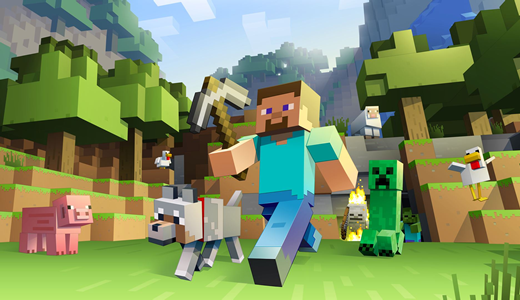If you’re a gamer, you feel pretty horrible don’t you?
I mean, those poor old games á la video have had a lot of shade thrown their way over the years. The hate usually has something to do with gaming’s addictiveness, violence, or some other tendency toward foul content. And … OK, plenty of those sneers are well-earned. But as you savvy Plugged In game consumers know, you don’t need to throw the game controller out with the bath water. (Isn’t that how the saying goes?) There are a lot of titles that can be safe, fun and even instructional if you look for them.
One such notable example is the game Minecraft. Yes, there are a few Enderman and Zombie menaces to be found in the game, but they are low key threats. And it turns out that there are a number of plusses that the average player may not even recognize. For instance: Minecraft, it seems, is a particularly useful tool for kids with autism.
For those who aren’t familiar with the game, Minecraft is essentially a somewhat simple-looking button-cruncher built around mining resources, like ore and timber, and then using them to craft tools, machines and buildings. It’s sort of a gather-this-to-build-that kind of logical pursuit. And it’s that simple creative format, coherent structure and easy predictability that really appeals to kids with autism’s communication and interaction impairments.
Teachers and autism specialists have suggested that when played in a multiplayer setting , Minecraft really boosts some positive communication skills—helping the autistic players figure out how to talk to each other, share ideas through simple concepts, and get across instructions for what others on their project should do.
How does a video game do all that?
Well, they say it’s that basic building-block approach of the game. It’s easy to get into, there are few rules to follow. You can build whatever you want to and follow your own interests. The game is forgiving and people can’t come in and mess up your stuff. It’s portable, so kids of every stripe can carry it with them on a tablet or smartphone and connect more easily with peers who love the game, too. And, in a way, the game gives kids a simple lens to look through, along with a set of rules to help them organize things when the real world around them feels so crazy and cluttered.
I spotted a post online from a young man who explained how his sister—who has a mild case of autism—uses the game to cope when she’s overwhelmed. He then went about posting pictures of her online creations that featured three separate kingdoms comprised of massive castles, vast halls, dining rooms and theaters along with landscapes dotted with farms, stores, libraries and pools. It’s an impressive display.
In fact, Minecraft has been so useful as a connecting tool for teachers and counselors that entire websites and lesson plans have been created for instructive gaming pursuits—such as a site for families with autistic kids called Autcraft and the book “Minecraft in your Classroom,” that’s available as a free download in the Apple iBooks Store.
So, there you go, my gaming friend. There’s at least one title you can hold up when the video game haters look your way. Healthy gamers unite.






Recent Comments